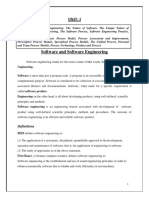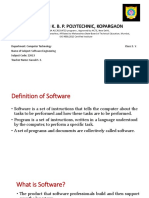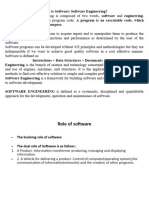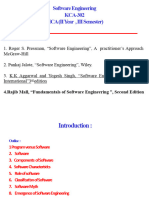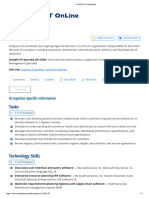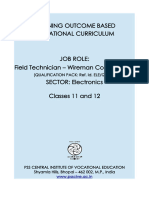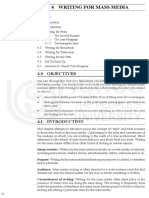0% found this document useful (0 votes)
43 views6 pagesSoftware Engineering
Software engineering combines software development and engineering principles to create, maintain, and improve software systems. It encompasses various types of software, including system, application, embedded, and web applications, each serving distinct functions and facing unique challenges. Additionally, the document addresses software myths that can lead to misunderstandings among managers, users, and developers, emphasizing the importance of clear communication and proper documentation in the software development process.
Uploaded by
Hima binduCopyright
© © All Rights Reserved
We take content rights seriously. If you suspect this is your content, claim it here.
Available Formats
Download as PDF, TXT or read online on Scribd
0% found this document useful (0 votes)
43 views6 pagesSoftware Engineering
Software engineering combines software development and engineering principles to create, maintain, and improve software systems. It encompasses various types of software, including system, application, embedded, and web applications, each serving distinct functions and facing unique challenges. Additionally, the document addresses software myths that can lead to misunderstandings among managers, users, and developers, emphasizing the importance of clear communication and proper documentation in the software development process.
Uploaded by
Hima binduCopyright
© © All Rights Reserved
We take content rights seriously. If you suspect this is your content, claim it here.
Available Formats
Download as PDF, TXT or read online on Scribd
/ 6









